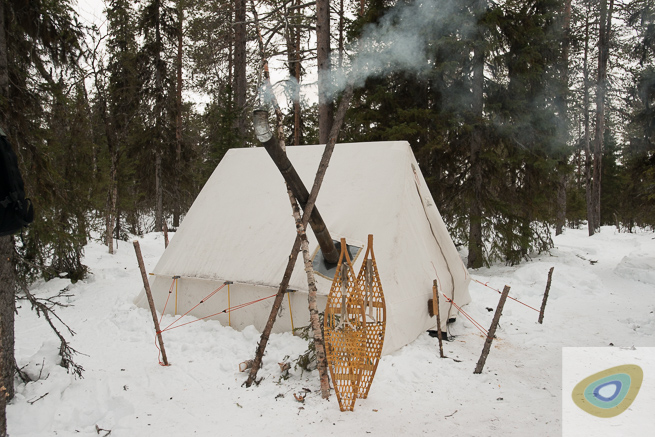
When travelling in a remote country, good food and good cheer are valuable beyond measure. Freeze dried food and pre-packed food is one way to dine in dry, cold conditions. Elk Scran is a little known, but traditional winter dish and is perhaps one of the better ways to find yourself replete in sub-arctic winter conditions.
It is not a traditional dish of the Northern indigenous peoples. You will not find it being described in a Jamie Oliver recipe book, nor will Pierre Larousse have an entry for it in Gastronomique. Much like the Bouillabaisse and Cassoulet, localised variations abound, and there is to be found not one single authoritative recipe for Elk Scran. Few people know of this dish in enough detail to reconstruct it.
One of the reasons for its relative anonymity with the average chef is the length of preparation required. A single meal of Elk Scran can take weeks, if not months, to properly prepare. Do not let this temporal investment deter you! Once you can serve just one single dish of Elk Scran, it is possible to go on feasting using the same basic recipe for several weeks without repeating the significant hard work to get to that very first morsel.
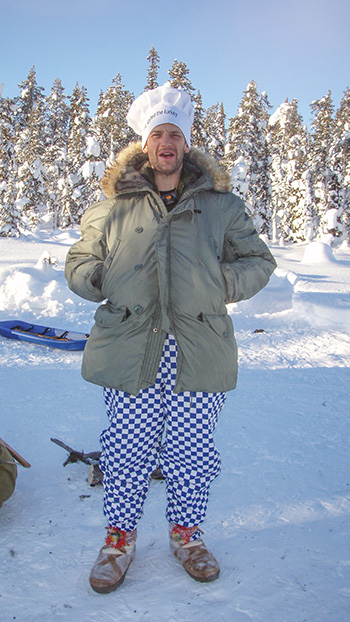
A cautionary note for you, the avid reader; the training required to safely eat the dish served in an authentic restaurant and setting can take weeks.
For the chef, however, this training is significantly prolonged – knowledge and first-hand experience of safe winter travel in the sub-arctic, fire craft, campcraft, navigation, leadership, and wilderness first aid are obligatory to ensure the comfort and safety of their diners whilst they regale themselves with the subtle textures and aromas of this magnificent dish.
Those wishing to attempt this recipe for the first time should take their time to consider if this is something they really want to eat. There is inherent risk in all things in life – none so true as for outdoor cooking – some risks in life we deem so small we consider them negligible, and others so great, we may choose to actively avoid engaging in them.
Frostbite, hypothermia, carbon-monoxide poisoning, and loss of life or limb from an axe are all plausible and unwelcome outcomes in the preparation.
Notwithstanding these risks, we begin in detail for the neophyte chef.
Bookings for this pop-up restaurant are often months in advance. Whilst it may at first appear inconvenient, the length required to prepare this dish is advantageous to the chef. It lends an opportunity to cater for dietary requirements of the guests well in advance. Not only for food allergies, but also for food preferences. Whilst the ingredients in this dish are traditional, the chef will allow himself judicious leeway in adjusting the recipe according to the needs of his guests.
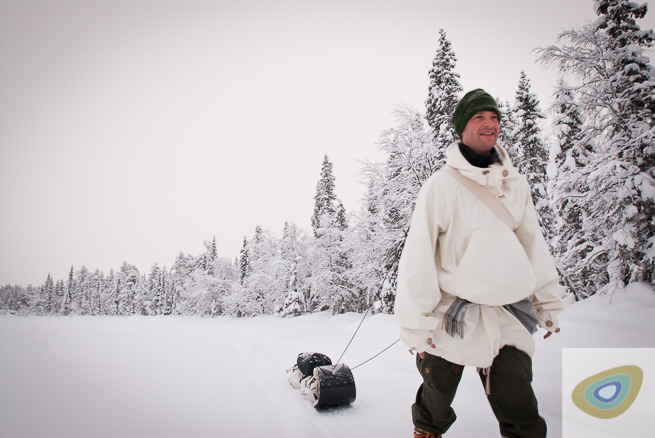
The base level of ingredients consists of vegetables. Dehydration helps infuse the delicate textures of the vegetables and concentrate them beyond measure, adding to the richness of the dish. Moreover, in extreme sub-zero temperatures dehydration facilitates the storage and handling of the ingredients in the final phase of preparing the meal. Select only those in the finest condition, as they will dehydrate and store the best. Pulses, beans, etc. are utilised to maintain an overall balance between carbohydrate, proteins, and fats. It may seem that this dish is slightly protein and fat heavy when compared to a more conventional western diet.
The chef will do well to remember the principles of thermogenesis regarding the amount of protein contained in the dish and the required location of the restaurant. In no order, we find that onions, parsnips, sweet potato, carrots, and okra should be prepared initially. Wash, peel, and slice evenly. A quarter of an inch thick is a good initial recommendation. Dehydrate the vegetables in batches, with each batch comprising of a single vegetable.
We benefit from using the Excalibur 9 or 10 tray Dehydrator with a 26-hour timer for its sheer capacity and flexibility in dehydrating food. Carrots lose much of their volume, as do parsnips, with sweet potato losing the least. Onions dehydrate extremely well, losing not only volume but significant weight as well. Caution should be exercised when dehydrating onions.
Those who find themselves affected when peeling onions should perhaps consider evacuating the house for at least a day or two whilst the dehydrator goes about its business. They may otherwise be left reeling from the fumes, reminiscent of fumigation and pest control, as every nook and cranny is filled with sulfoxides and sulfonic acids keen for their progeny; Propanethiol S-oxide, to waft onto the liquid surface of your eyes thus forming sulphuric acid.
Enough vegetables should be prepared this way to last for several meals, thus making the whole Elk Scran experience fiscally viable. Since dehydrated and cooled, the vegetables themselves should be sealed into plastic bags or likewise to thus keep their freshness and to avoid accidental rehydration whilst in transit to the restaurant for cooking.
The restaurant is without electricity, and thus the location for dehydrating, and consumption will be many, often hundreds, if not thousands of miles apart. Sealing the vegetables into bags may further be protected by including sachets of silica gel. This ensures the prime quality vegetables arrive in tip-top condition ready to be cooked. Traditionally, dried bean and lentils are to be included in this dish, black beans and split red and green lentils are commonly used. Packaging of these pulses should follow a similar fashion to the vegetables.
The more expensive phase of shipping the bulk ingredients to the restaurant now takes place. This is an opportunity for our budding chef to refine his dish by including into the shipping a selection of herbs and spices. Large wooden shipping crates are by far the most cost effective means of shipping the ingredients to the final location. Included in these crates may be found other sundries, such as axes, saws, sleeping equipment, stoves, tents, snowshoes, and the like. These help impart a delicate flavour to the dried ingredients, and this infusion process must never be hurried under any circumstances.

A wise precaution to ensure that the correct amount of time is taken for the infusion of the aromatics by placing the crate onto a large articulated lorry, and having it driven around most of Europe until it reaches its destination – far beyond the Arctic Circle, and into the sub-arctic forests of Northern Scandinavia. Only once several weeks have passed in this transit, and after many miles travelled will the desired infusion have taken place.
Our chef should now ensure that his ingredients have arrived in situ by confirmation over the phone, or email. Once confirmed, he should set about making the long journey himself to the frozen winter wonderland, the home of the Sami.
Travel by plane, train and automobile is common, taking the best part of 24 hours to arrive. Here, the chef would do well to meet with a Sami butcher, who will be all too eager to provide him with top quality Elk mince, it is preferable to have this pre-packaged into 2 Kg blocks – frozen directly. These blocks of meat will be transported along with our budding chef to the crate of dried ingredients that awaits him.
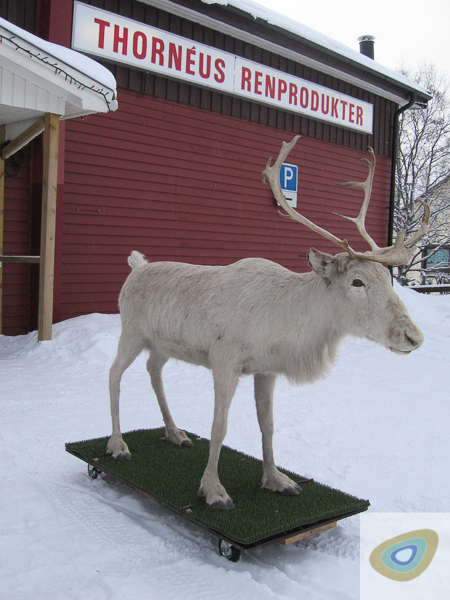
Unpacking of the crate will commence, kit will be checked, organised, and re-packed to manifest a swift transfer to the site of the pop-up restaurant. Snowmobile is by far the quickest way of accessing the back-country in winter. Those more traditional in nature, will no doubt wish to man-haul all the equipment and provisions deep into the wilderness on pulks or sleds, using existing trails wherever possible to avoid over-exerting themselves in the deep powdery snow that’s so often found in the hibernal Northern forests.
Once the site of the pop-up restaurant is located, all efforts should be diverted to setting up the site, building a platform of snow, and accruing the finest quality firewood. The neophyte will often make the mistake of felling a birch tree – avoid these for Elk Scran, Likewise, it is often assumed that a Spruce or Pine tree as thick as a Capercaillie must be felled for Elk Scran – this is indeed also a folly. It is far better to select a dead, standing pine tree, as knot free as possible, at least in its lower sections and preferably no thicker than a half-decent Rugby player’s thigh – a decent Rugby player’s thigh would be too thick, as would a Capercaillie, and no one has any use for an indecent Rugby player.
Limbing and sectioning of firewood is well documented elsewhere, however, the chef will require a couple of decent sized pieces from the lower section of the tree left in the round, and least a couple of feet long to correctly prepare the Elk mince the following day. The rest of the firewood should be processed as for firing a wooden stove to heat a canvas tent commensurate with the climatic conditions. Lighting the stove and melting snow for a brew is now obligatory, and should commence with haste. Fear not enthusiastic chef, for tomorrow your hard work pays off with great dividends. Tomorrow is the day you get to sample the delights of Elk Scran. After preparing a hot, light evening meal, heads should hit the pillow swiftly as an early start awaits the chef.

Early the next morning, the chef begins the day by lighting the wood stove. Kindling prepared, and rounds split, the fire lights quickly. The thawing out of the frozen kettle leads to a swift breakfast followed by a round of hot steaming coffee. With the rest of the members of the party despatched safely for a day’s excursion into the boreal, the final preparation of the meal begins in earnest. Our chef begins preparing the meat by first taking a section of timber, no longer than two feet long, and in the round. Left aside from the previous day, the log has no role in tenderising the meat. Pounding frozen meat at temperatures below -30C to tenderise it may keep you warm but is generally regarded as an exercise in futility. A 2-kilo block of frozen elk mince is placed on top of the log and, taking his axe, the frozen meat is split in two with a short, swift blow. This really is man-cooking!
Next, the meat is set upon the stove in a pan, with an inch or so of water in it. The lid is placed on top and the pot is set on a simmer. Gradually steaming, and slowly broiling the mince will defrost it into more manageable chunks. Adding dried beans, lentils, or pulses at this stage is advisable, but no more. The dish needs to sit and simmer for a couple of slow hours. It requires occasional attention, breaking the mince up as the outer layers of the frozen block thaw out. The process can be assisted with the use of a foot-long wooden splint, bevelled at one end, and chiselled at the other.
Once fully defrosted, and broken up, the seasoning should join the mince. Herbs and spices should be used confidently and constantly. Dried, powdered garlic is almost de rigeur. Chilli is often found used in condition with other herbs and spices. A Cajun theme to the seasoning is particularly good, as is a medium to hot Madras. Once seasoned, the pot should again be left for a while to sit and let the magic work. Make no mistake in thinking our chef will be able to sit idly whilst this dish cooks. There are plenty of camp chores to be done – wood to split, snow to melt, sleeping bags to be aired, bindings to be repaired, the list goes on…
After some time, the meat is ready to have the dried vegetables added, so that they reconstitute sufficiently before the time has come to serve this magnificent dish. The chef will look out for the correct time to add this, and identifying the perfect moment to do this comes only with experience. As a guideline, it usually occurs after around two cups of coffee. This can vary with the type of coffee used.
Adding ingredients in the correct order is also a point overlooked by the neophyte. Root vegetables should be added first; sweet potatoes, parsnips, carrots etc, will all take longer to rehydrate. Onions, okra, tomatoes, and the like should be added much later in the process. When adding these dried ingredients, it is best to monitor the amount of liquid in the pot available for this process to happen expediently. Remember, it’s easy to add more when you need than it is to take it out!
Left once more, for a couple of hours, the dish reaches a level of aromatic intensity few people have experienced. When this moment comes, timing becomes vital. The final touches to the restaurant should be made. The ever-encroaching darkness, so ever present at higher latitudes in winter months, adds an urgency to the proceedings. Do not rush, a mistake at this final stage may ruin all the hard work put in to this culinary creation. As the guests arrive, brushing off the snow from their clothes before entering the tent, a final sortie is made to ensure that all kitchen kit is stored, and adequate space is available for all to sit and dine.
The moment is here! The dish is served! Elk Scran in all its glory, by candlelight and under the glow of the Northern Lights, and not a morsel is left spare.
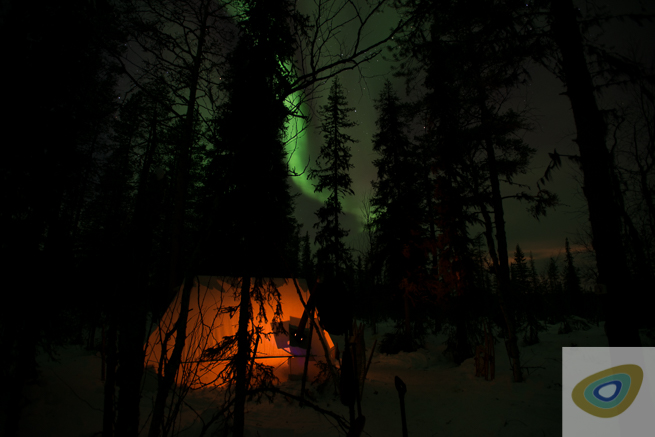
Latest posts by Iain Gair (see all)
- It’s Just A Knife: Use It - August 8, 2017
- Elk Scran: A Pop-Up Feast In Paradise - February 28, 2017

Dave Howard
I have to say a huge thank-you to the essayist, I was chuckling all the way through this useful guide to the culinary process involved in serving up the finest Elk Scran. I loved the use of the Gransfor Bruks meat cleaver, and the comparison of tree trunk girth to the “decent” rugby player`s thigh.
The dish itself sounds very welcome after a day in the sub zero tundra, with the surprise flavouring, will it be chili or wasabi we wonder ?
I take my toque of to said chef, and would have loved to have been his sous chef.
All the best, Dave.
Iain
Thanks Dave.
Glad you enjoyed it.
Iain
Marcel Lafond
Hi Iain,
Would you not prefer to use Bear Paws instead of river snowshoes in the bushes? Or are you walking rivers and lakes and trails?
Marcel